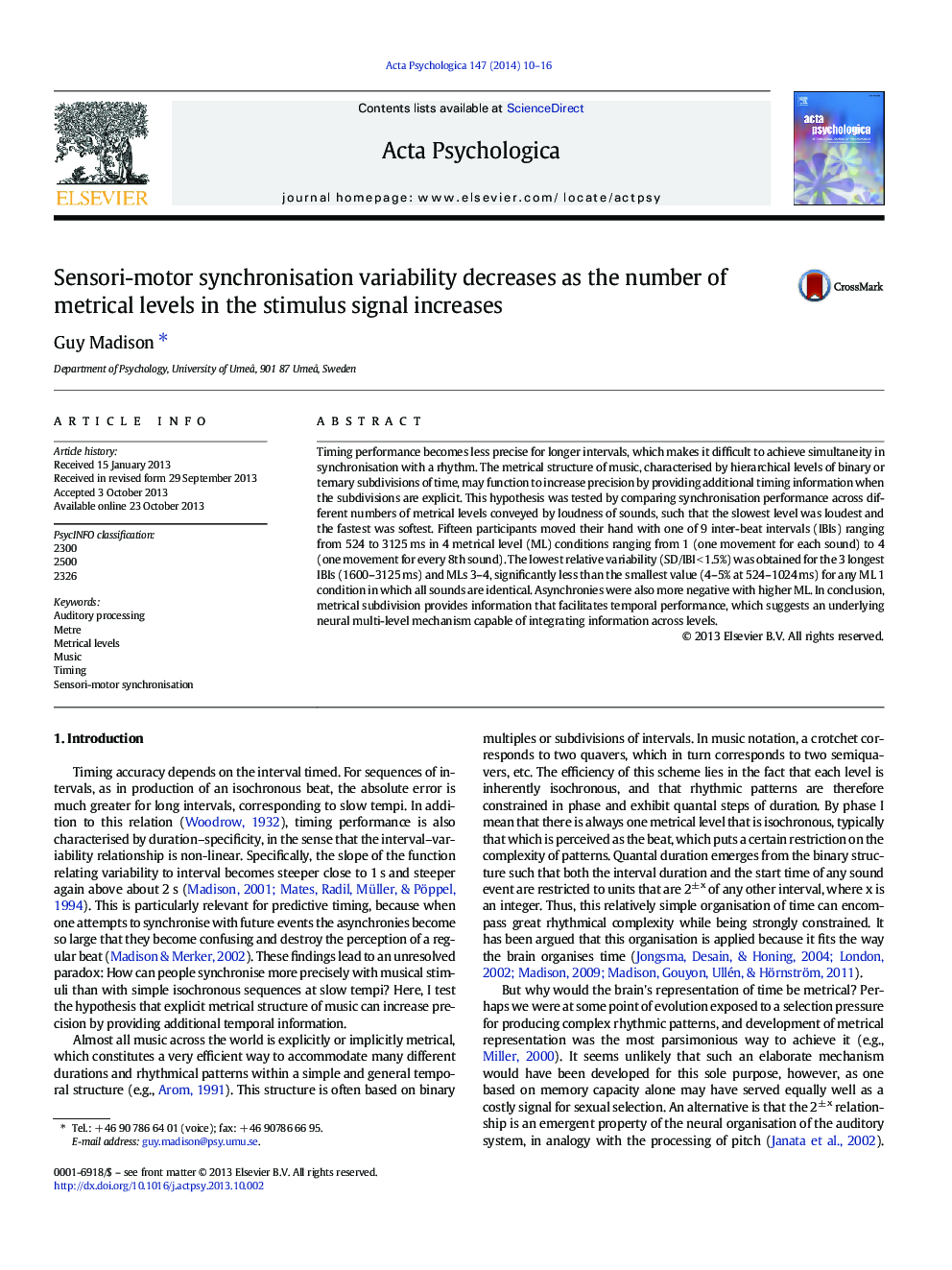| Article ID | Journal | Published Year | Pages | File Type |
|---|---|---|---|---|
| 7277878 | Acta Psychologica | 2014 | 7 Pages |
Abstract
Timing performance becomes less precise for longer intervals, which makes it difficult to achieve simultaneity in synchronisation with a rhythm. The metrical structure of music, characterised by hierarchical levels of binary or ternary subdivisions of time, may function to increase precision by providing additional timing information when the subdivisions are explicit. This hypothesis was tested by comparing synchronisation performance across different numbers of metrical levels conveyed by loudness of sounds, such that the slowest level was loudest and the fastest was softest. Fifteen participants moved their hand with one of 9 inter-beat intervals (IBIs) ranging from 524 to 3125Â ms in 4 metrical level (ML) conditions ranging from 1 (one movement for each sound) to 4 (one movement for every 8th sound). The lowest relative variability (SD/IBIÂ <Â 1.5%) was obtained for the 3 longest IBIs (1600-3125Â ms) and MLs 3-4, significantly less than the smallest value (4-5% at 524-1024Â ms) for any ML 1 condition in which all sounds are identical. Asynchronies were also more negative with higher ML. In conclusion, metrical subdivision provides information that facilitates temporal performance, which suggests an underlying neural multi-level mechanism capable of integrating information across levels.
Related Topics
Life Sciences
Neuroscience
Cognitive Neuroscience
Authors
Guy Madison,
